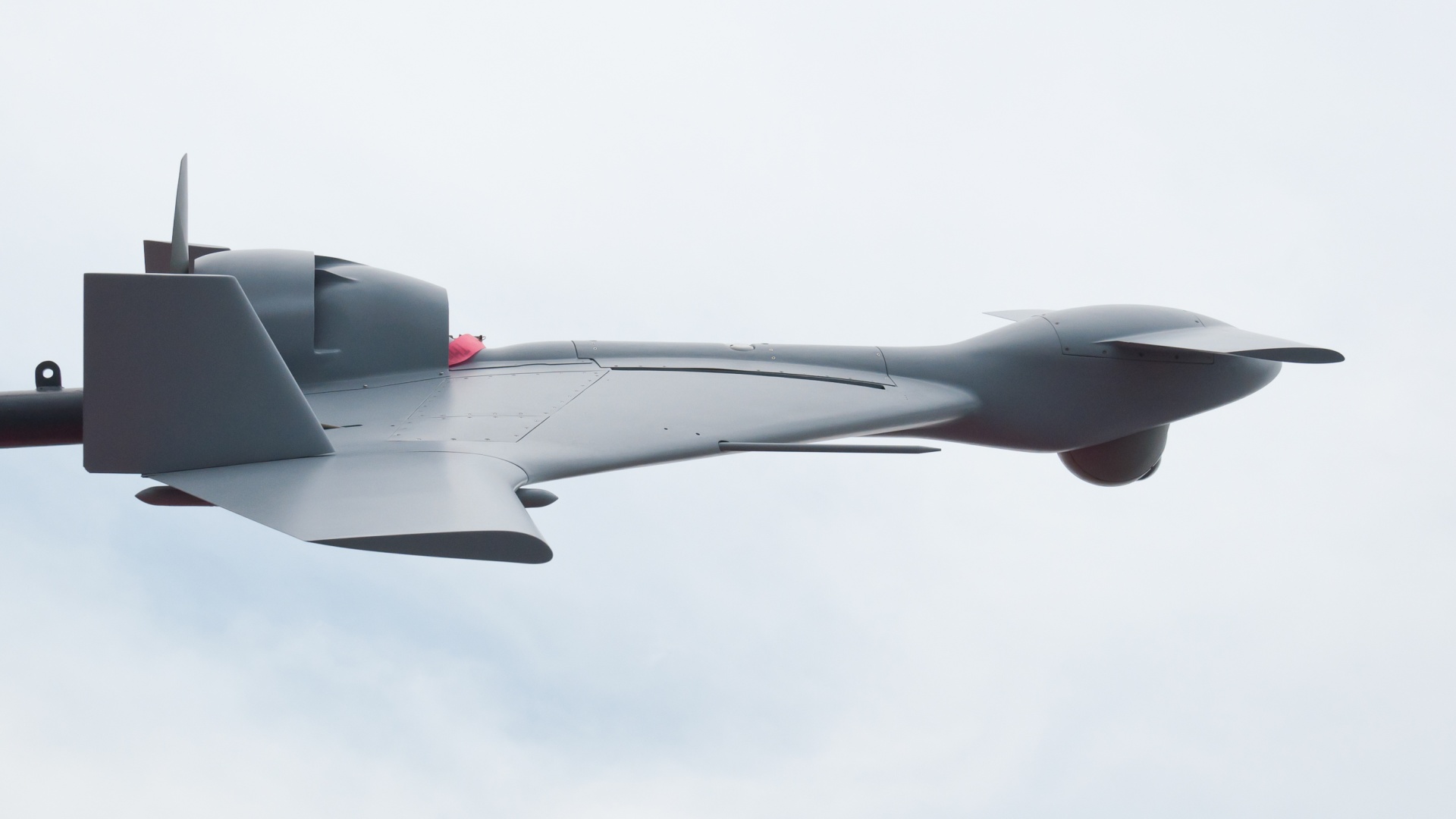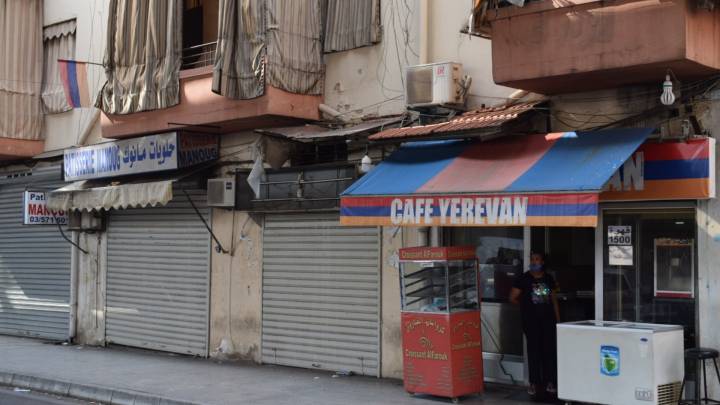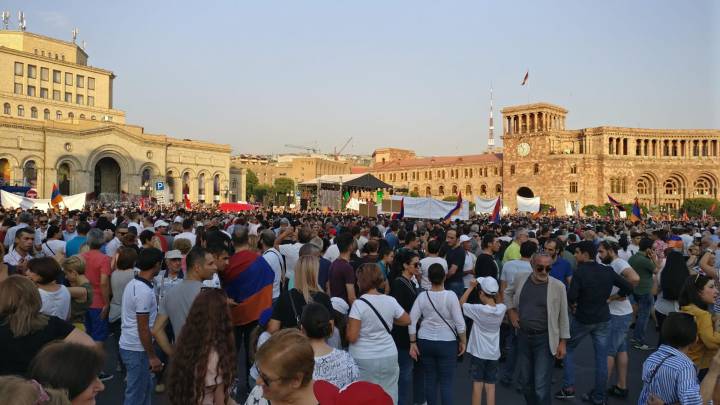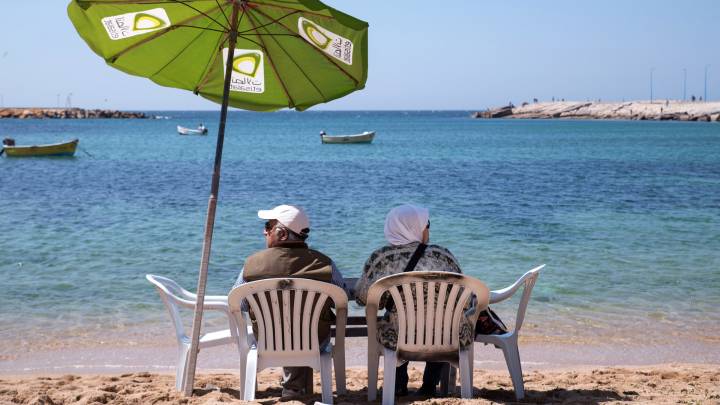The recent escalation in the Nagorno-Karabakh conflict between Armenia and Azerbaijan shows how the war of the future will be fought. UAVs play a key role in this process.
As usual, it is only the massive use of violence that makes the world aware of a conflict. This happened recently in the disputed region of Nagorno-Karabakh between Armenia and Azerbaijan at the end of September. As is usual in the thoroughly networked 21st century, it took only a few hours from the start of the attack until videos of the fighting first appeared in relevant forums and finally on wide-reaching social networks. They showed exploding tanks and burning combat vehicles. Immediately, the media on both sides began to speak of "defensive successes".
One could now think that this conflict would also be conducted in the usual manner. With soldiers, tanks, rocket launchers, artillery and the use of fighter planes. But this is wrong. The newly flared up conflict is, analogous to the events of the past months in Libya and before that in Syria and Iraq, a blueprint for modern warfare.
First we have to take a look into the past. Here it can be seen that, in recent years, the armament efforts of the two adversaries have already been directed very specifically in a certain direction. Both parties to the conflict invested primarily in the acquisition of unmanned systems in the military capability spectrum of reconnaissance and impact.
Since the collapse of the Soviet Union, the Caucasus region in particular has not been at rest. An ethnic Armenian enclave on the territory of the young Azerbaijani state became the apple of discord. Armenia succeeded in bringing the territory under its control, and Russia brokered a ceasefire in 1994. The Nagorno-Karabakh region, inhabited by Armenians, declared itself an independent state called Artsakh, but received no international recognition.
Since then, violence has erupted again and again, fuelled by states that supply the conflict parties in the background. In 2008, 2014, 2016 and July 2020, Armenia and Azerbaijan fought fierce skirmishes without a clear winner.
Both sides dug in along a ceasefire line and lurked. They watched developments in other crisis areas closely and armed themselves. In April 2016, a "Loitering Unmanned Aerial Vehicle" (UAV) of the type "Harop" (also called "Harpy 2" in reference to the predecessor model "Harpy 1") was deployed for the first time. The special feature of this type from the Israeli company IAI: the drone circles over a target area, searches for a target and then drops kamikaze-like onto it.
In April 2016, Azerbaijan deployed drones of this type to attack artillery and anti-aircraft positions and even buses loaded with Armenian soldiers on their way to the front. After IAI was said to have been unwilling to meet the increasing demands of the Azerbaijani military, another Israeli company, Aeronautics, came into play. With the "Orbiter 1K", it had also developed an effective Kamikaze drone, which Azerbaijan finally produced under license as the "Zarba".
Since the morning hours of September 27, 2020, fighting has resumed. This time already using a whole range of different drone systems. Azerbaijan in particular has upgraded in recent years. Baku could count on support from abroad. Not only in the procurement of "Harop" and "Orbiter 1K", but also for the "SkyStriker" model. Azerbaijan also purchased these models from Israel in 2019.
In addition, Azerbaijan procured drone types that operate at medium altitudes, known as "Medium Altitude High Endurance" (MALE). For example, the "Hermes 900" model from the Israeli company Elbit, which is comparable in its performance to the American MQ-9 "Reaper" or the Chinese "Wing Long" systems.
Armenia also began to enter the drone business. Artsakh, of all places, has developed its own drone industry - not least under the impression of the impressive success of the Azerbaijani models. Companies such as AZDynamics developed their own powerful attack drones, the "Krunk-9" and "Krunk-11" types, starting in 2017 at the latest.
In 2018 Armenia announced that it would purchase drones built by Artsakh for its own military. In 2019 a number of these drones were demonstrated to the population, especially tactical mini-UAVs for reconnaissance. Ideal for spying on each other in the trenches - and preparing the later deployment of the "Kamikaze" drones.
Other states also supplied their systems to the two conflict parties. Russia, for example, sees itself as Armenia's protective power, but supplies both countries with weapons - and Turkey openly supports Azerbaijan. The current videos published by Azerbaijan about the success of their drones against the Armenian armed forces strongly resemble the images of armed Turkish TB2 drones of the "Bayraktar" type, which are used in the Syrian Kurdish areas and in Libya.
In fact, there are reports of first sightings of Turkish TB2 in the airspace over Nagorno-Karabakh. Turkey had participated with its own troops in a series of exercises in Azerbaijan immediately before the conflict broke out. In June 2020, Azerbaijan had announced the acquisition of TB2 drones. Presumably, Syrian mercenaries were also bought at the same time.
The air-to-ground missiles of the "MAM-L" series used by the Turkish TB2 are also said to be responsible for the loss of several Armenian anti-aircraft systems of the type "9K33 Osa" and "9K35 Strela-10" of Russian origin. In the first published success stories of the Armenians, 49 drones of different types have already been destroyed, in addition to one shot down aircraft, four destroyed helicopters, 80 destroyed combat and combat vehicles and 82 hit transport vehicles.
These numbers are certainly exaggerated but they testify to the presence of drone systems on the battlefield. The filmed wreckage at the known crash sites can be clearly assigned to the mentioned drone types. And as in Libya, the Turkish TB2s are proving their capabilities in the South Caucasus. Apparently, the Armenian anti-aircraft systems had not succeeded in detecting the attacking drones. This also speaks for the effective use of supporting interference measures in the electromagnetic field.
In fact, threats are ideally suited to the current conflict. UAV drones in particular are cheap, difficult to detect and at the same time precisely deadly weapon systems for which the lives of pilots need not be endangered. Armed MALE drones, on the other hand, make it possible to precisely detect a target and to attack it with air-to-ground missiles. Here again, a possible launch does not mean a risk of losing a pilot.
The use of drones, however, allows for escalation. Thus Armenia has already announced that it is "forced" to use more powerful weapon systems. These include Russian medium-range missiles of the type "Iskander M" and multiple rocket launcher systems of the type BM-30 "Smerch" or TOS-1 "Buratino". The "Buratino" batteries fire thermobaric rockets, colloquially aerosol bombs, and are characterized by a devastating area effect.
So while many European armies still do not have a powerful MALE system to protect their soldiers, small states in crisis regions or even terrorist organizations are showing how wars will be fought in the future. And when it is so easy to send "kamikaze" drones past the enemy without risk, any inhibition imposed by international humanitarian law is likely to fall.
In the 21st century, the principle of distinction, proportionality, the prohibition of the use of unacceptable methods and the general principle of humanity seem to give way to autonomous warfare. The current conflict in Nagorno-Karabakh clearly shows us the parameters of tomorrow's warfare.
Dr. Markus Reisner, PhD, is Colonel (GS) of the Austrian Armed Forces and author of "Robotic Wars".




